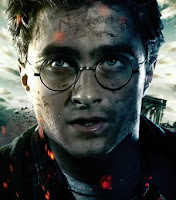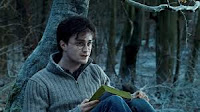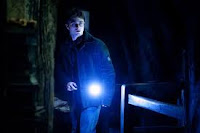 |
An extreme close up is used to reveal the slightest of detail in a the screen shot. It helps the audience to see what the character is feeling and helps to portray every emotion that the character is displaying. An extreme close up would only show part of the characters face, and therefore the shot should be around something every small and very detailed.
In the image you can see that the part of the face that has been zoomed into is the characters eyes and eyes are the very way that we can normally tell how people are feeling. If seeing this screen shot you would be able to tell the the character is strong and confident; yet slightly angered. from this the audience would get all of these emotions just from this one camera shot.
close up
 A close up is used to show the face of a character so that the audience feels that they know the character on a personal basis, it is the very way that a producer gets the audience to have that connection with a certain character or person. normally close ups are used to help the audience feel what the character is feeling, by showing the expression on their face in a closer more intimate way. A close up shot is normally a view of a characters face.
A close up is used to show the face of a character so that the audience feels that they know the character on a personal basis, it is the very way that a producer gets the audience to have that connection with a certain character or person. normally close ups are used to help the audience feel what the character is feeling, by showing the expression on their face in a closer more intimate way. A close up shot is normally a view of a characters face.Form this image we can see what the character is feeling but in a much less defined way then if we was to see just his eyes as in the previous type of camera shot. This helps the audience concentrate in the individual and how they are feeling rather then other people around the character.
 |
medium close up
medium close up is usually taken from about the waist upwards. a medium close up is normally used so that the audience can see the characters body language. by letting the audience see the characters upper body they feel very casual around the character as if they were in a normal conversation with a friend, they are not on an intimate level but more of a casual level.
from the image we can see what the character is feeling by letting up see the body language instead of showing just the characters face we have less of a connection with the actor but wee see more of the situation the character is in.
medium long shot
 A medium long shot is to give the audience the expression on the characters face as well as an idea as to what is happening behind the character in the shot.
A medium long shot is to give the audience the expression on the characters face as well as an idea as to what is happening behind the character in the shot. as you can see from the example image you can see clearly how the character is feeling and their emotions, but also we can see whats going on around the character. this helps the audience to gather their bearings and understand where they are.
 long shot
long shota Long shot is more helpful when the individual is moving or walking. The character need to take up most of the height on the image but so that you can see the background behind them as well- as you can see form the image.
extra long shot
an extra long shot is useful when the character is walking through the scene. this means they can come closer and still you will be able to see the scene around them as well as what the character is doing. Extra Long shots don't always have to concentrate on a particular character(s) it can also be a just the scene and this is called an establishing shot for the audience to know where the scene is set.
form the image you can see that we get an idea of what is going on in the shot before zooming in to a certain group/individual. this relaxes the audience and helps the understanding of what is going on.
 |
two shots are used when two people are having an important conversation and the conversation is important for the audience to know. from a two shot you would normally cut to an over the shoulder shot or a close up of one on the individuals reactions.
From the image we can see that the two characters have a connection and they are both in deep thought about the same thing. we can see as the audience that they are obviously acquittance's and this gives the audience a chance to understand the relationship between the two and come to a conclusion about how they feel for each other.
over the shoulder shot
over the shoulder shots are normally used when there is a conversation between two people. this would mean that the audience would see the character on screen from the 2nd person. normally we would see the person in a close up shot and then the image would switch to the next person ready for them to speak.


No comments:
Post a Comment